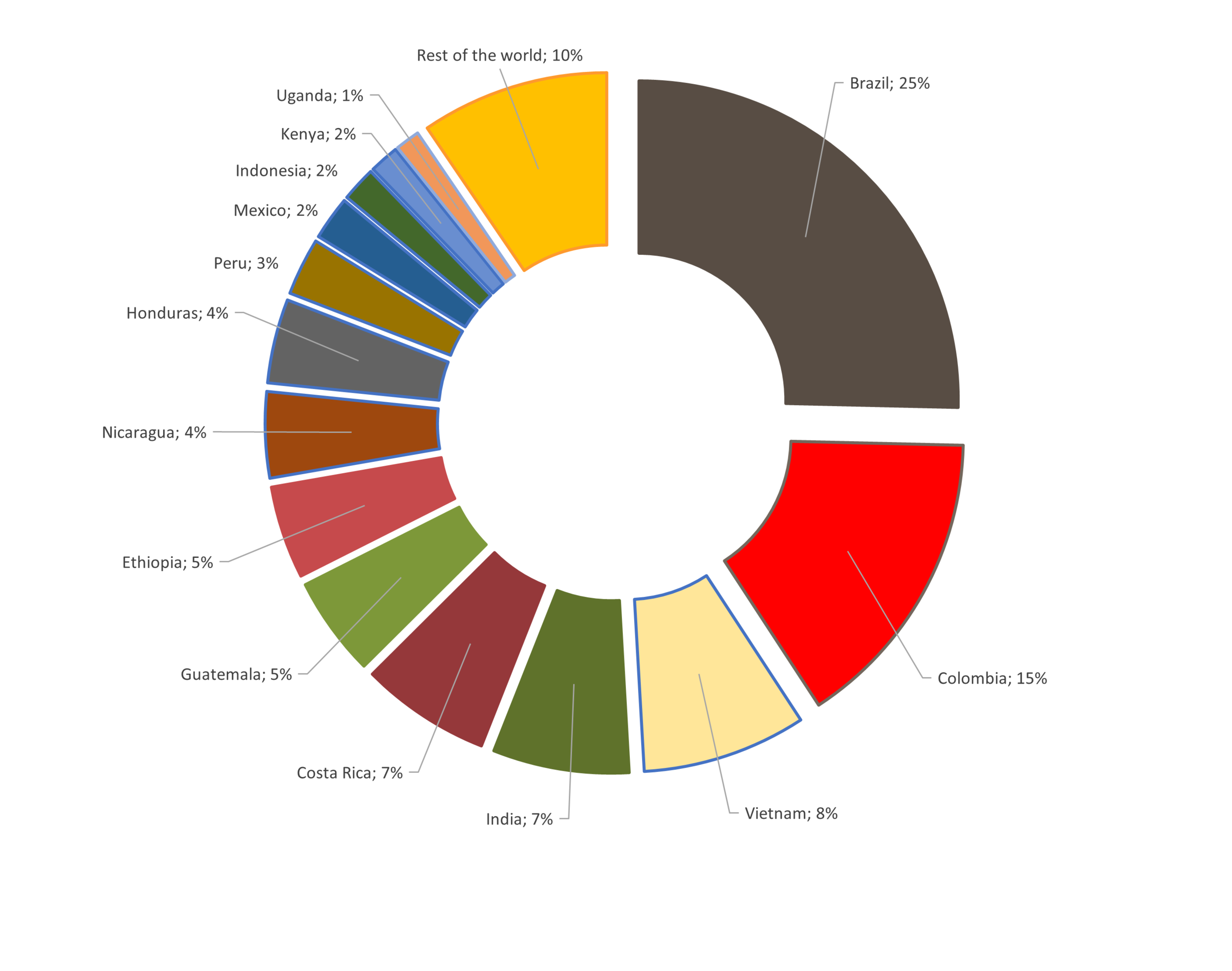Where Coffee Grows
Coffee is primarily produced in the so-called "coffee belt," which spans tropical regions of the Americas, Africa, and Asia. About 70 countries produce coffee and the top five (Brazil, Vietnam, Colombia, Indonesia and Honduras) cover roughly 75% of the world’s production. Production varies by region, with Arabica and Robusta being the main varieties, each requiring specific environmental conditions.
Coffee is cultivated through a family-farming system (described as smallholders) or an entrepreneurial business structure (estate farms). According to the International Trade Centre (ITC), definitions of what is considered a large farm vary by country, from more than 50 hectares in Brazil to less than 5 hectares in Kenya.
Of the world’s 12.5 million coffee farms, smallholder farms account for up to 80% of global production. Small coffee farms are therefore the backbone of the coffee industry and require adequate external support to remain operational in the long term. Almost 95% of coffee farms worldwide are smaller than five hectares. Brazil is an outlier in terms of farm size, with 46.8% of its farms being smaller than five hectares.
Where Does Switzerland Source Its Coffee?
In 2023, imported green coffee beans came from South America (45%), North and Central America (23%), Asia and Oceania (20%), and Africa (9%).
According to the International Trade Centre (ITC) Trademap, Switzerland sources coffee from a wide range of countries. Most coffee beans in 2023 came from Latin America: Brazil was the largest supplier at 25%, followed by Colombia (15%) and Costa Rica (7%).
Swiss coffee companies also source from other continents. In Asia and Oceania, the main suppliers are Vietnam (8%), India (7%), and Indonesia (2%). In Africa, Ethiopia (5%) and Kenya (2%) are key sourcing countries.
Coffee Bean Processing Methods
The processing of coffee beans begins in producing countries, where the beans are prepared for export using washed, natural, or pulped natural methods.
Washed coffee is processed using the wet method, in which the coffee cherry is pulped by a machine, removing the red or yellow outer skin. Once this is done, the seeds, still covered in mucilage, are fermented in water for one to two days, or sometimes longer.
Natural coffee processing, also known as the dry method, is the oldest preparation technique and has been used for hundreds of years. Farmers spread the coffee cherries on a flat surface, where they are dried naturally in the sun for two to six weeks. This method is most common in regions with low humidity, little rainfall, or limited access to water.
The pulped natural method is a more modern, hybrid approach that combines elements of both the washed and unwashed methods. It is sometimes also referred to as semi-washed coffee processing. First, machines remove the outer skins, after which the beans are left to dry in the sun. Once the drying process is complete, farmers store the seeds for around 24 hours before drying them further. This method involves fewer steps and allows for faster processing.
While many producing nations are increasing their investments in local roasting and soluble coffee production to capture more value, the majority of coffee is still exported as green beans. Countries such as Germany and Italy, which import the largest volumes of green coffee in Europe, handle most of the roasting and retailing.




